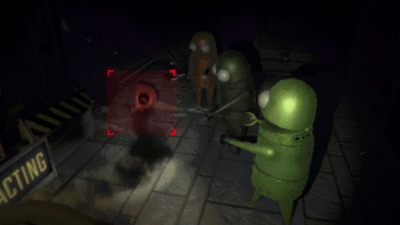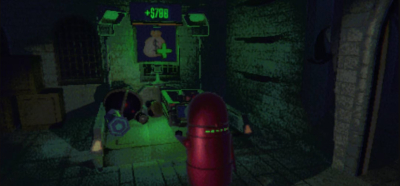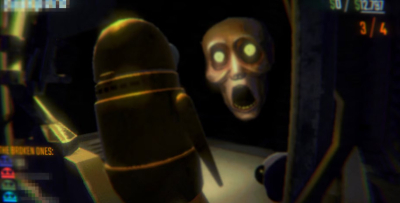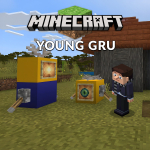R.E.P.O.: A Journey Through Tactical Depth and Immersive Storytelling
Introduction
R.E.P.O. is an intriguing blend of strategy, exploration, and deep narrative that immerses players in a richly detailed virtual world. Having logged countless hours in various gaming universes, I can confidently say that R.E.P.O. stands out as an innovative addition to modern gaming. With a unique concept that combines tactical decision-making with immersive storytelling, this title invites gamers to experiment with different tactics, unlock secrets, and even explore available mods without compromising its core gameplay. In this extensive review, I delve into the various aspects of R.E.P.O., from gameplay mechanics and visual style to overall performance and available enhancements like cheats and mods that make the experience even more engaging.
Gameplay and Mechanics
At its core, R.E.P.O. offers a gameplay experience that is both challenging and rewarding. The design encourages players to take a thoughtful approach when planning their moves. The interface is intuitive, making it easy for both new and experienced gamers to navigate. Unlike many modern titles that rely heavily on tutorials, R.E.P.O. trusts its players to learn and adapt on their own. This decision makes the game a rewarding challenge for those who enjoy unpacking complexities as they progress.
One of the unique aspects of the game is its dynamic decision-making system. Every choice you make impacts the narrative, creating a gameplay experience that rarely feels stagnant. Whether you choose to adopt a defensive strategy or embrace a more aggressive approach, there is always a balance between risk and reward. Such flexibility ensures that each session feels fresh, with room for experimenting with various techniques and even exploring available mods to tweak the gameplay further.
While the control scheme is straightforward, the strategic depth emerges through intricate gameplay layers. It encourages gamers to think ahead and often experiment with the in-game cheats—an optional addition provided by the developers for a more relaxed or experimental approach. Many players appreciate that these mods do not detract from the fundamental strategy but rather enrich the overall experience by adding new dimensions to explore.
Storyline and Narrative Depth
The narrative of R.E.P.O. unfolds across diverse environments that are both atmospheric and narratively rich. The game introduces a world filled with lore and history that invites exploration beyond simple progress markers. Every region you discover, every character you interact with, and every subtle nod to the underlying backstory makes the experience more rewarding. The narrative does not spoon-feed the player; rather, it challenges you to piece together clues and create your own understanding of the plot.
In this sense, R.E.P.O. resonates with the spirit of classic role-playing games where exploration and player ingenuity are highly valued. The pacing is deliberate, ensuring that each plot twist is savored rather than rushed. For gamers who appreciate a thoughtful narrative crafted with care, the storyline adds a profound emotional layer to the gameplay. Coupled with an extensive voice-over cast and well-written dialog, the game’s story has a cinematic quality that draws you into its mysterious world.
Visual and Audio Experience
Visually, R.E.P.O. is a masterpiece. The art style is unique, merging realistic textures with a touch of abstract design. This hybrid approach not only enhances the overall aesthetic but also reinforces the game’s surreal atmosphere. The environments are meticulously detailed, with each area possessing a distinct visual identity that complements the narrative tone. Whether you are exploring an ancient ruin or a modern cityscape, the settings are crafted to evoke both beauty and mystery.
The use of lighting and shadow serves to heighten the tension, especially during moments of strategic planning. Sound design also contributes significantly to the overall immersion. A well-curated ambient soundtrack keeps the player engaged, while carefully placed sound cues guide you through critical moments in the game. The combination of richly layered audio and immersive visuals creates an experience that is both engaging and memorable.
Modern gamers will appreciate the support for various display resolutions and graphics settings. This flexibility allows you to fine-tune performance for the best possible experience, regardless of your platform of choice. Additionally, the game is optimized for both PC and consoles, ensuring that whether you choose to download and play on a PC, or install on a console, the performance remains remarkably stable.
Control, Customization, and Enhancements
R.E.P.O. features a robust customization system that empowers players to tailor their experience. Controls can be remapped to suit individual preferences, and the game supports a variety of input methods. This level of personalization means that whether you are using a traditional controller or prefer keyboard and mouse, you can comfortably engage with every aspect of the game.
For those who enjoy tweaking their games further, R.E.P.O. offers extensive support for mods. The community around R.E.P.O. has already developed an array of mods that range from cosmetic improvements to gameplay overhauls. These mods are a testament to the game’s flexibility and the vision of its developers. They provide fresh experiences that keep the game alive long after the initial release, encouraging creative strategies and new ways to play. Additionally, in-game cheats are made available, allowing players who wish to experiment with the narrative or gameplay elements a little extra freedom to do so.
Multiplayer and Community Engagement
A notable feature that elevates R.E.P.O. is its multiplayer mode. The online community is active and welcoming, making it easy to find matches with players who share your passion for strategic gaming. The multiplayer sessions are well-balanced and allow for cooperative tactics as well as competitive play. It is refreshing to see a game that manages to blend solo narrative experiences with a meaningful multiplayer component.
Interacting with peers in multiplayer mode adds a layer of dynamism to the game. You can share strategies, discuss potential mods, and even explore cheats together in a collaborative environment. The matchmaking system is efficient, ensuring that you spend more time engaging in the game rather than waiting in queues. The game also supports cross-platform play, ensuring that whether you download it on PC or play it on consoles, you are likely to find a competitive community waiting to challenge you.
Performance, Stability, and Technical Aspects
From a technical standpoint, R.E.P.O. performs admirably across a range of hardware configurations. The game is exceptionally well-optimized, and even when running on mid-range systems, it promises a smooth experience. I encountered minimal issues with frame rates or load times, even in regions with more graphics-heavy scenes. The performance is consistent, making it a great choice for players who appreciate a seamless gaming experience, regardless of whether they install it on a high-end gaming rig or a more budget-friendly system.
The developers have also put a significant focus on stability. Frequent updates ensure that any bugs are swiftly addressed, and community feedback is taken seriously. This ongoing support has cemented R.E.P.O.'s reputation as a reliable title that not only meets but often exceeds the expectations of seasoned gamers. Whether you are trying to explore mods or engage in competitive multiplayer matches, the technical underpinnings of the game reassure you that a stable and enjoyable experience is always on offer.
Narrative Replayability and Long-term Appeal
One of the reasons R.E.P.O. captivates its audience is its high replay value. With multiple narrative pathways and countless decision points, the game ensures that no two playthroughs are identical. This is augmented by the availability of cheats and mods which allow for even more experimentations during follow-up sessions. Even after several completions of the main storyline, I found reasons to return to the game—discovering new approaches each time, testing different strategies, and fully embracing the strategic elements embedded in each mission.
Moreover, the developers have cleverly instituted features that encourage exploration. Hidden areas, secret narrative threads, and easter eggs are scattered throughout the game, waiting to be discovered by the most dedicated gamers. The reward for thorough exploration often comes in the form of new mods or unlockable content that enhances both the narrative and gameplay. This design philosophy not only enriches the experience but also fosters a strong community that continually shares insights and discoveries.
Comparisons to Genre Peers
In comparing R.E.P.O. with other strategy and narrative-driven games, it’s clear that this title has managed to carve out its own niche. While many competitors rely on high-octane action, R.E.P.O. focuses on depth, strategy, and atmospheric storytelling. This approach might not appeal to every casual gamer, but those who appreciate layered narratives and creative gameplay mechanics will find R.E.P.O. thoroughly compelling.
What sets this game apart from similar offerings is the way it seamlessly integrates strategic decision-making with a story that evolves based on the choices you make. The inclusion of various mods ensures that even players who have experienced the base game will have fresh challenges to tackle. This ongoing innovation is a testament to the developers' commitment to offering a game that not only meets but evolves with the expectations of its dedicated player base.
Final Analysis and Verdict
In conclusion, R.E.P.O. is a must-play for anyone who enjoys deep, strategic games with rich narratives and beautiful visuals. Its innovative mechanics, thoughtful design, and robust customization options, including available mods and cheats, make it one of the most intriguing titles to have hit the market in recent years. The game strikes a delicate balance between challenge and accessibility, allowing newcomers and veteran gamers alike to appreciate its depth and nuance.
As an experienced gamer, I found that every moment spent in R.E.P.O. was thoroughly rewarding, with ample opportunities to experiment with gameplay styles across various platforms. Whether you choose to download it on your PC, console, or any supported system, the experience remains consistently engaging. For those looking to install a game that offers both strategic complexity and an immersive narrative, R.E.P.O. delivers on every front.
The multiplayer mode further enhances its appeal by offering a vibrant community where strategies can be shared and new challenges embraced. With steady updates and frequent improvements influenced by player feedback, R.E.P.O. is a game that promises continued relevance and innovation in the competitive gaming landscape.
If you are seeking an adventure that challenges every aspect of your strategic thinking while also offering plenty of room for creative expression through mods and adjustable cheats, then R.E.P.O. is the game to explore. Its thoughtful design and technical brilliance make it an outstanding entry into the world of advanced tactical gaming. I wholeheartedly recommend experiencing this title, as it not only sets a benchmark for narrative-driven strategy games but also paves the way for future titles in the genre.
How to download R.E.P.O.
R.E.P.O. is available across various platforms and can be downloaded from leading digital distribution services. While the base game is free in some promotions, additional content may be offered as premium upgrades. The game supports PCs, consoles, and even mobile devices where compatible; however, compatibility may vary, and some platforms might require cloud or emulator support to run the title. To install, simply visit the official website or your platform’s store, click on the download option, and follow the installation wizard. Basic requirements include a modern processor, at least 4GB of RAM, and a dedicated graphics card for optimal performance. Cheats and mods are officially acknowledged by the developers, with several community-created enhancements available to experiment with. Moreover, the game features unblocked access options ensuring that it can be played in environments where restrictions might usually apply.
To download the app, you will get links to the Official Website and/or official digital markets.















































